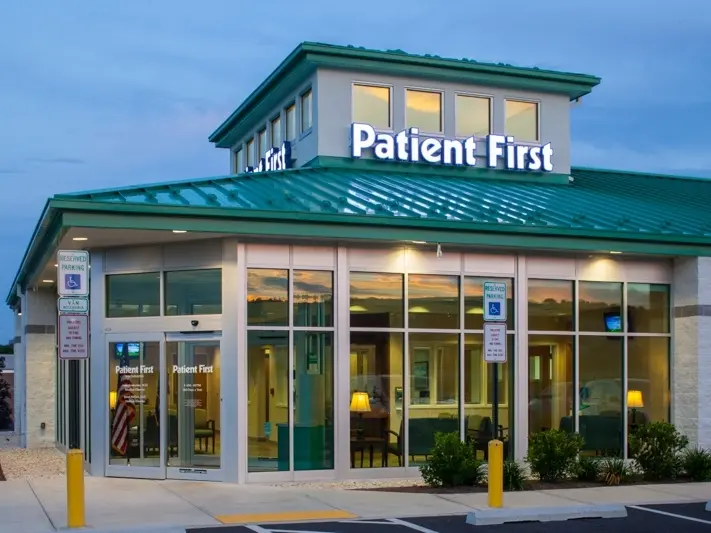What is Patient First?

What is Patient First?
If you’ve ever needed emergency medical treatment, you’ve probably heard of Patient First. This chain of urgent care centers allows walk-in patients to receive diagnosis and treatment for a variety of common ailments. Because there are no appointments necessary, walk-ins can quickly get the care they need. But what is the patient First? And what does it mean for you? Let’s take a closer look at what this band has to offer. Here are the benefits of patient-first care:
Patient-first approach
A patient-first approach to care emphasizes the importance of the patient’s health and well-being. Personalized education and direct communication with the medical team to make patient-centered care a priority. Empowered patients can commit to treatment plans, understand the risks and side effects, and alert their medical team when unexpected events arise. Patient-centered care is also better for the health care system and can help create a more successful future for healthcare providers and institutions.
Because this model of care is focused on patients, the patient-first approach is particularly effective for smaller patient populations, where it is often more difficult to scale up. By focusing on a small patient population, patient-centered care delivers specialized expertise and improves communication. Patients’ experiences, outcomes, and care coordination are improved and data collection is more efficient. In addition, patient-first care improves the experience of patients, which means improved health outcomes.
Patient First approach
The patient-first approach can be difficult to implement, but the benefits are enormous. For one, it reduces the burden on staff. Patients are more likely to comply with treatment plans if they feel they have received the best possible care. The patient-centered approach also increases the chances of improved provider ratings. As a result, a patient-first approach can result in lower costs and higher patient satisfaction. If your practice uses this approach, you’ll find it easier to achieve your goals.
As patient-centered care becomes more popular, it is essential to create a strong team of people dedicated to the patient. Such teams can deliver comprehensive patient care, focusing on the patient’s disease, the patient’s community, and the therapy. Patient-centered care is the hallmark of patient-management organizations. For example, a pharmacist may work in a pharmacy for a large organization and interact with patients less frequently. In such a case, the pharmacist must consider the patient’s overall health and happiness when making decisions.
A patient-centric approach also benefits health organizations by enhancing communication and transparency. By combining a patient-centric approach with a patient-centric mindset, providers can improve the quality of their customer service and create a multichannel marketing campaign. More health organizations are becoming partners in patient wellness outside the clinics. By improving patient experiences, health organizations can differentiate themselves from competitors and drive patient retention. It also benefits sponsors of research for drugs.
Non-appointment-based urgent care
Patients’ expectations for urgent care are shaped by past experiences, word of mouth, and physical evidence. That’s why non-appointment-based urgent care centers place a premium on patient care. To create an ideal environment, these urgent care centers employ staff with a positive attitude and an understanding of the patient’s needs. They also provide a high level of communication and care with their doctor’s office.
Quality is measured by the patient’s experience, and the operator of an urgent care center must understand and manage patient expectations for quality. The physical appearance, personnel, and communication materials of an urgent care center can help patients determine the quality of care. However, there are a number of other factors that patients use to judge a center’s quality of care. These factors include patient reviews, physical layout, and design.
Many urgent care centers offer appointments, but this is not necessary. If you cannot wait, you can check-in online. This allows you to provide initial information about the condition, which can speed up your visit with a healthcare professional. The patient can also choose from a variety of payment options. Some urgent care centers also offer telemedicine, so patients don’t have to wait for an appointment.
Patients often choose non-appointment-based urgent care centers for their convenience. They do not need an appointment and can usually provide care at a much lower cost than a trip to a hospital emergency room. Some urgent care clinics even share their patient information with their PCPs. Some urgent care centers even have the same doctors as primary care. So if you’re looking for a quick, easy, and affordable way to get medical attention, a non-appointment-based urgent care clinic might be the right choice for you.
Occupational health services
Occupational health services are an integral part of a business’s overall health management. They provide a wide range of services to employers of all sizes and types. They focus on prompt, accurate communication and streamlined record-keeping to help employees quickly return to work. Additionally, they can provide timely and accurate information to employers, ensuring that they are fully aware of employee health status. Here are some examples of occupational health services provided by the company:
Approximately 3 million work-related injuries occur each year in the United States. Injury rates are highest in manufacturing, construction, and transportation industries, but they can be lower in certain municipalities. Injury rates are estimated at between three and seven per 100 employees. Despite low rates, most employers still require occupational health services. This information can be used to improve workplace health and safety. The New York State Occupational Health Clinic Network Report summarizes statistics on the health status of workplaces, the types of injuries, and clinical needs.
An occupational health care team consists of medical providers, nurses, and rehabilitation staff. The team follows up on patient care and provides educational programs. In addition, they utilize state-of-the-art technology to speed recovery. Furthermore, they work with the patient and business contacts to ensure that they are getting the right care. Ultimately, it is the health of the patient that matters most. With the support of Occupational Health Services, your employees will stay healthy and productive.
Occupational Health
Occupational health clinics in New York state are available to all workers and retirees. Many clinics accept most health insurance plans. These specialists specialize in occupational disease prevention and treatment and help patients get back to work quickly if an injury occurs on the job. Additionally, their staff will help employees cope with the stress of their jobs. These clinics also work closely with the Workers’ Compensation system.
Occupational health services offer a balance between urgent care and occupational medicine. Urgent care services are most commonly morning and evening business. And because most patients in occupational health care are already working, the added service will allow you to focus on other aspects of your business and continue to serve your patients. If you are a business owner and need to improve your bottom line, contact an Occupational Health Service.
Volunteer opportunities
Interested in volunteering at Michigan Medicine? There are many ways to get involved. If you have medical training, you can help out in a hospital or clinic. In addition, the work you do can make a difference in the lives of others. There are many volunteer opportunities with this organization, and they can change your life forever. Simply choose an area below to learn more. Then, apply! It’s easy to get involved!
Hospital volunteers assist with the delivery of medical care by providing emotional support and genuine concern to patients and visitors. Their role is to assist nursing staff and help improve the quality of care. Volunteers’ role is critical because they add a personal touch to the hospital and help the patients and staff feel at home. This is especially true if they have a knack for communication and problem-solving. You can help change the face of an impersonal medical environment by becoming a patient advocate.
Volunteers
Volunteers can choose from a wide variety of roles at Manhattan’s Hospital for Special Surgery. These positions range from reading comfort to departmental support. Several past volunteers have gone on to complete further training or to work in labs. Volunteers at this hospital have even returned to repeat the experience. These roles are often not as physically demanding as they seem. However, you should be at least sixteen years of age. During the influenza pandemic, volunteer opportunities at Lenox Hill Hospital were halted.
Volunteers on this unit play a crucial role in patient care. Providing friendly visiting and patient support, these volunteers are often asked to collect vital data and complete paperwork. They must work two to three-hour shifts from 8:00 a.m. to 12:00 p.m. The hours of the Cardiology Unit vary. Please Visit This Site for Further Information.







